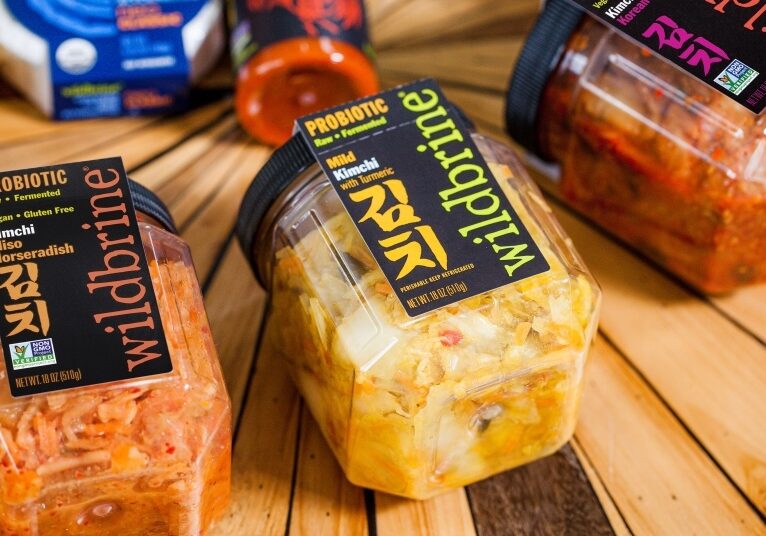When we set out to make our kimchi, we had one major goal in mind: to create something delicious while staying true to our mission of making healthy, plant-based foods that everyone can enjoy. We weren’t out to reinvent Korea’s most famous condiment. Who would want to mess with that mouthwatering combination of fermented Chinese napa cabbage, radish, ginger, garlic and spices? But what many people don’t realize is that most Korean kimchi also contains fish sauce or dried shrimp—not exactly vegan-friendly—so we had to find a way to replicate that awesome umami punch without it.
Fortunately, we love a challenge.
Once we began delving into the history of kimchi, we realized we had more wiggle room than we initially thought. When the first kimchi was created more than 2,000 years ago, it was a simple combination of radishes and salt. Over the centuries, the recipe evolved to include other ingredients depending on the region and season. Today there are more than 200 known varieties of kimchi in Korea alone, made from a wide range of fermented vegetables and spices.
As we usually do when we have a wild idea for a new product, we headed straight to the kitchen and started experimenting. How could we bring that savory hint of the sea to our kimchi without fish products? The answer was found beneath the waves, in the form of sea vegetables. (Before some marketing genius came along and rebranded them, sea veggies were known as seaweed, or by Japanese names such as nori, arame and wakame.) We played around with a few different sea vegetables before discovering a Korean variety that brought just the right depth and complexity to our kimchi.
After perfecting our unique take on the Korean style, we explored other Asian flavors and added Miso Horseradish Kimchi and Mild Kimchi with Turmeric (based on Korean “white kimchi”) to the lineup. All are vegan kimchis and gluten free, and have the same incredible probiotic benefits as standard kimchi. Generally speaking, our kimchi is milder than traditional Korean versions—we like to call it “gateway kimchi”—which we feel makes it more approachable to folks who find some varieties to be too pungent.
Ultimately, what we’re trying to do at wildbrine is pay homage to one of the world’s greatest dishes while finding creative ways to incorporate this ancient condiment into modern cuisine. Kimchi deviled eggs? Yes, please. Kimchi fries? Absolutely. Kimchi-topped scrambled eggs and avocado toast? Bring it on.
We can’t think of a more delicious tribute.
